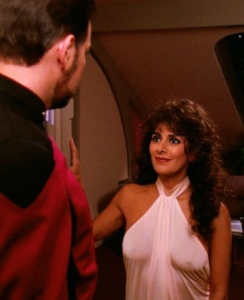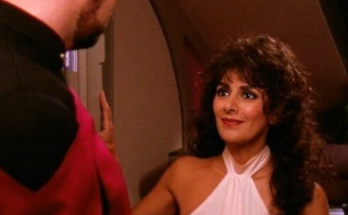
The Details You Never Noticed in Star Trek: The Next Generation
For decades, Star Trek: The Next Generation (TNG) has captivated audiences with its optimistic vision of the future, compelling characters, and groundbreaking storytelling. But behind the polished bridge of the USS Enterprise-D lies a universe of subtle details, hidden references, inside jokes, and production quirks that even devoted fans often overlook. Whether you’re a long-time Trekkie or someone returning to the series with fresh eyes, TNG is packed with surprises that make the rewatch experience richer every time. Here are some of the most fascinating details you may never have noticed.
1. The Invisible Architecture of the Enterprise-D
The Enterprise feels like a real, fully functional starship—and that’s by design. The show’s production team created complete blueprints, many never shown on-screen, so everyone understood where rooms were located. This is why you rarely see characters wandering aimlessly: the cast knew exactly where Ten Forward was, or how far Engineering was from the bridge. It created a subtle continuity that makes the ship feel lived-in, even if you never consciously notice the effort.
In addition, subtle lighting changes reflect the ship’s emotional tone. When the crew is relaxed or in diplomatic mode, lights are warm and diffused. During battles or emergencies, the set is lit sharply from above to make everything feel colder and more urgent. The tone of the episode is literally baked into the lights.
2. Data’s Subtle “Learning Curve”
Brent Spiner’s performance as Data is filled with tiny evolutions that reveal his growth over seven seasons. Early on, Data’s head moves in short, precise snaps—robotic and mechanical. But as he progresses, especially after episodes like “The Measure of a Man,” “Data’s Day,” and “In Theory,” his movements soften. His voice shifts from monotone to gently expressive. Even his blinking pattern changes. He blinks more often in later seasons because the actor and producers wanted to signal Data’s gradual approach toward humanity.
These changes are rarely acknowledged within the show, but they’re intentional—and noticing them makes Data’s journey even more emotional.
3. The Uniform Details That Tell Their Own Story
The classic TNG uniforms hide dozens of small details that even dedicated viewers miss. For example:
-
The actors originally wore tight spandex jumpsuits, and you’ll often see Picard adjusting his uniform as if pulling it down—what fans call the Picard Maneuver (not to be confused with the starship tactic of the same name).
-
Rank pips on the collar follow strict naval traditions; Wesley Crusher’s evolving insignia tells the story of his growth long before a plot point acknowledges it.
-
In later seasons, the shift to wool uniforms literally allowed actors to stand straighter, contributing to a subtle change in posture across the show.
The wardrobe wasn’t just clothing—it helped shape how the characters moved and behaved.
4. The Personal Items in Each Crew Member’s Quarters
Some of TNG’s most meaningful worldbuilding happens in the background of characters’ rooms:
-
Picard’s quarters contain archaeological artifacts, ancient books, framed star charts, and later, the Ressikan flute from “The Inner Light,” one of the show’s most cherished Easter eggs.
-
Worf’s quarters are decorated with Klingon weapons, ritual items, and later, more personal mementos that change depending on his life stage.
-
Data’s room features half-finished art, incomplete poems, and mechanical devices he tinkers with—visual proof of his ongoing attempt to understand creativity.
These set decorations evolve over time, reflecting character development without a single line of dialogue.
5. The Subtle Comedy Hidden in the Background
TNG is remembered as thoughtful and philosophical, but the show also hides a surprising amount of low-key comedy. For example:
-
In scenes with extras in Ten Forward, they’re often playing 24th-century versions of Earth games or gossiping about ship life—full improvised moments viewers never hear but can sometimes see.
-
The background panels—LCARS screens—often feature inside jokes the production staff added, such as references to pop culture, crew names, or technical nonsense disguised as futuristic interfaces.
Even the computer sometimes participates in subtle humor: Majel Barrett recorded hundreds of lines, and variations were intentionally inserted to give the ship “personality.”
6. The Deep Lore in Minor Alien Characters
TNG introduced dozens of alien species, but some of the most interesting details hide in throwaway moments:
-
Bolian physiology is hinted at through small lines suggesting unique medical challenges.
-
Betazoids subtly react emotionally during tense scenes—Marina Sirtis often performed micro-expressions before anyone else in the room sensed danger.
-
Klingon culture, though explored deeply, reveals even more through costuming: different families have unique armor patterns, and their hairstyles serve as symbols of honor.
These worldbuilding touches give the galaxy a cohesive realism fans don’t always register consciously.
7. The Foreshadowing of Major Story Arcs
TNG was not designed for serialization, yet the writers often planted seeds for future episodes:
-
The Borg are hinted at early with subtle references to unknown threats in unexplored regions.
-
Worf’s eventual conflicts with Klingon politics are quietly set up long before they become central to his story.
-
The show drops clues about Picard’s vulnerability to mind control or psychic influence, which pay off in episodes like “Chain of Command” and “Sarek.”
These threads were intentional worldbuilding—proof that TNG was quietly more serialized than it seemed.
8. Stellar Performances Hidden in Small Moments
Because TNG’s main cast is so strong, fans often overlook the brilliance of guest actors:
-
Majel Barrett’s Lwaxana Troi seems comedic, but her quieter episodes reveal emotional depth that adds layers to Betazoid culture.
-
Ronny Cox as Captain Jellico delivers one of the most quietly complex roles in the series, long debated by fans.
-
Even one-off characters like the alien child in “Hero Worship” or the scientist in “Remember Me” give performances that deepen the show’s humanity.
The background acting is equally intentional—everyone on the Enterprise is doing something meaningful.
9. The Subtle Evolution of Technology
Props changed slightly over the seasons to reflect progress:
-
PADDs became slimmer, mirroring the real-world progression toward tablets.
-
The tricorder gained new buttons, displays, and functions as the writers imagined more uses.
-
Transporter effects were refined continuously, becoming smoother and more modern-looking.
The evolution feels natural, like real technological innovation over time.
Final Thoughts
Star Trek: The Next Generation is a show built with extraordinary care. The deeper you look, the more there is to discover—micro-expressions, prop details, production design choices, hidden jokes, and subtle storytelling woven into every frame. These details elevate TNG from a great sci-fi series to a timeless, layered masterpiece worthy of endless rewatches


